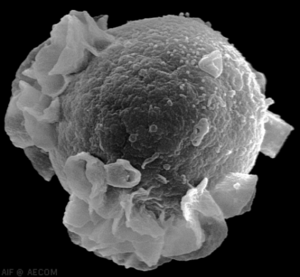Epstein-Barr Virus


Etiology
Taxonomy
| Order = Herpesvirales | Family = Herpesviridae | Subfamily = Gammaherpesvirinae | Genus = Lymphocryptovirus | Species = Human Herpesvirus 4
Description
The Epstein-Barr virus (EBV) is one of the two human host-specific viruses in the subfamily Gammaherpesvirinae, along with Kaposi's Sarcoma, a virus normally associated with lesions in AIDS patients. EBV is a double-stranded DNA virus, making it more stable and less likely for mutations than RNA viruses. It is an enveloped herpes virus, which means it can cause a life-long latent infection. More than 95% of the human population contain EBV antibodies, meaning that they have come into contact with the virus at some point in life and it is lying latent. Many people are asymptomatic when infected, but under certain stresses, diseases, such as mononucleosis, can arise.
